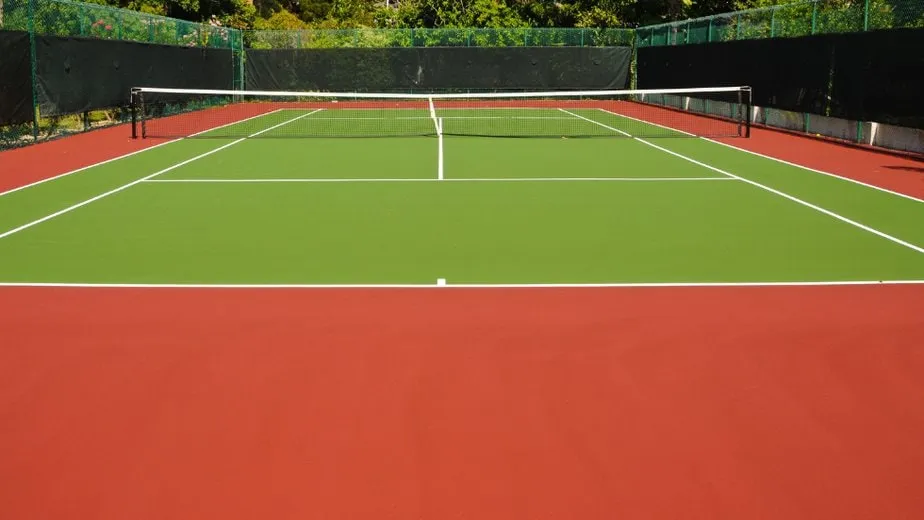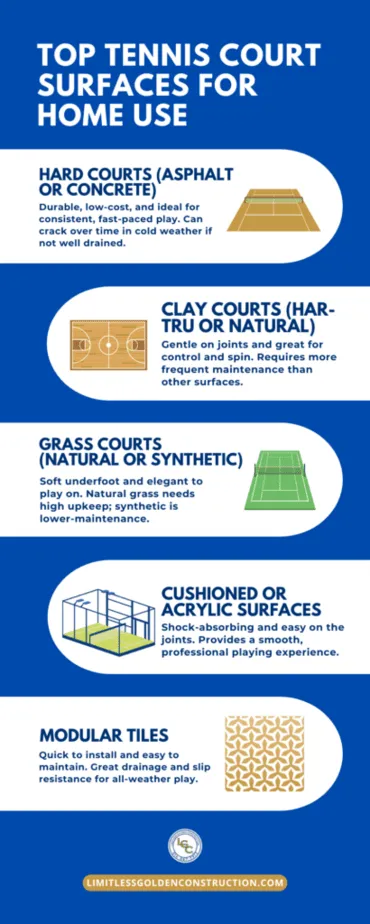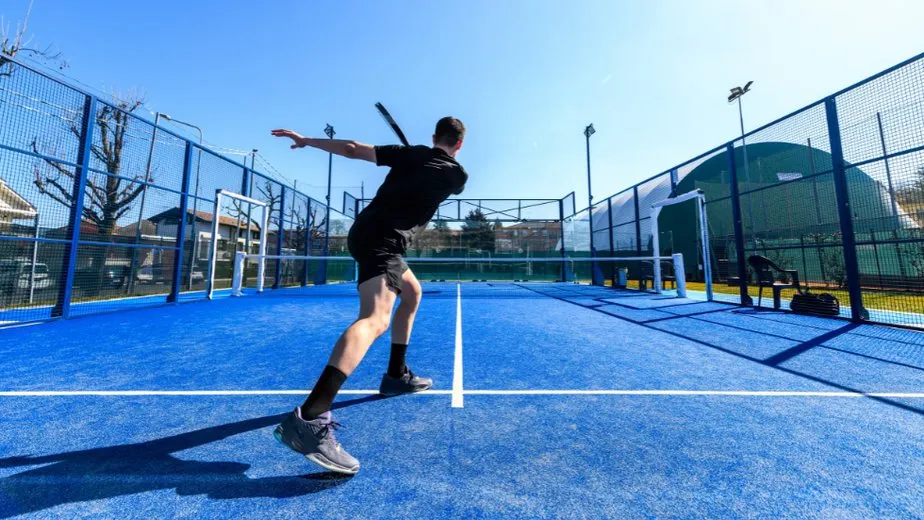Choosing the right types of tennis court surfaces for your backyard is essential, not just for aesthetics, but also for functionality, durability, and long-term satisfaction. For homeowners who value quality and want to create a premium playing experience, understanding the various options can make all the difference.
This guide will help you explore the best types of tennis court surfaces for backyards, the pros and cons of each material, and how to maintain your court for years of flawless play.

Types of Tennis Court Surfaces: An Overview
Tennis courts come in a variety of surfaces, each with distinct characteristics that impact ball speed, bounce, and overall playing feel. For residential backyards, the surface you choose will depend on your budget, local weather conditions, and personal playing preferences. Here’s a quick look at the main categories of tennis court surfaces you can consider:
- Hard Courts (e.g., asphalt, concrete): Known for their durability, affordability, and consistent gameplay, they’re one of the most popular options for residential use.
- Clay Courts (e.g., Har-Tru or natural clay): A softer option, great for slower play and spin control, but higher maintenance compared to hard courts.
- Grass Courts (e.g., natural grass or synthetic grass): Low-impact on joints and a luxurious feel, but require significant upkeep.
- Synthetic and Cushioned Courts (e.g., acrylic or rubberized surfaces): Offer comfort and shock absorption, often suitable for players concerned about joint strain.
Key Considerations for Choosing Different Types of Tennis Court Surfaces
Before you commit to installing a backyard tennis court, it helps to think through a few important considerations to determine the right surface for your specific needs.
1. Space and Size Requirements
The dimensions of a tennis court are standard (78 feet by 36 feet for doubles), so ensuring you have sufficient yard space is key. Also, consider any additional space needed surrounding the court for movement and fencing.
2. Climate & Weather Conditions for Tennis Court Surfaces
The local climate in New York State can significantly impact your court’s durability. For instance:
- Hard courts can withstand cold winters, but may develop cracks if drainage isn’t optimized.
- Grass and clay courts may be more susceptible to weather changes and require seasonal adjustments.
3. Play Style and Comfort
Do you want fast-paced games with even bounces, or slower gameplay where control and spin dominate? Play style influences the overall material choice.
If you need the consideration of a pro for a tennis court surface, explore your limitless possibilities with us.

Understanding Types of Tennis Court Surfaces Materials
Each type of material offers unique benefits and challenges for backyard tennis courts. Here’s an in-depth look at the materials commonly used for residential courts.
Asphalt Tennis Court Surfaces: A Common Option
When it comes to backyard tennis courts, asphalt stands out as a leading hard-surface choice thanks to its balance of cost, durability, and ease of maintenance. Asphalt is highly resistant to wear and tear, making it ideal for families or frequent use.
Building Asphalt Courts: The Process
Constructing an asphalt court involves meticulous work to ensure a quality finish. The process generally includes:
- Clearing and leveling the area.
- Building a base layer with proper drainage systems.
- Laying down the layers of asphalt and allowing them to cure.
- Painting and sealing the final surface for smooth play.
Clay Courts
Clay courts, though less common for backyards due to higher maintenance, offer excellent cushioning and slower ball speeds for improved control and spin. Har-Tru, a popular clay-like surface, mimics the feel of natural clay while requiring slightly less upkeep.
Grass Courts
There’s nothing more classic than grass courts. Natural grass delivers a premium playing experience but demands regular mowing and upkeep. Synthetic grass serves as a lower-maintenance alternative while still providing that lush, soft feel underfoot.
Synthetic and Cushioned Materials
For backyard courts prioritizing longevity and ease of play, acrylic and cushioned layers are an excellent investment. These surfaces reduce impact on joints while maintaining consistent ball performance.
Maintaining Your Tennis Court Surfaces
To ensure your tennis court looks and performs its best over the years, regular maintenance is key. This includes sweeping, cleaning off debris, and pressure washing the surface. For clay courts, maintaining a consistent moisture level is also crucial.
Enhancing Appearance with Paint
Court paint plays a dual role, it enhances visibility and gives your court a polished appearance. Look for non-slip, UV-resistant tennis court paints to boost longevity and safety. Vibrant color options like green, blue, or red create a professional touch for backyard courts.
Proper Cleaning Techniques for Different Types of Tennis Court Surfaces
Cleaning your tennis court regularly not only ensures aesthetics but also maintains surface integrity.
- For hard courts, use a pressure washer to remove dirt and debris.
- Courts with synthetic or cushioned materials benefit from gentle scrubbing with a mild soap solution.
- If you have clay courts, leveling and daily brushing are musts.
Care for Outdoor Asphalt Courts
Outdoor courts face additional stress from the elements. For asphalt surfaces, seal coating every 2–4 years can help protect against cracking and moisture penetration, extending the court’s lifespan.
If you’re having or already have a tennis court, and you need more information or help with the maintenance, don’t hesitate to contact us.
Making the Best Choice for Your Needs
When making your final decision, you’ll need to consider several factors to ensure your tennis court meets your personal and practical needs.
Budget
Cost is often the most influential factor when choosing a tennis court material. Hard courts like asphalt are often more cost-effective. Materials like Har-Tru or acrylic may have a higher upfront cost but offer specific benefits (e.g., lower joint stress, better aesthetics) that make them worthwhile for some.
Playing Style
Different surfaces accommodate specific play styles. For example:
- Fast-paced players might prefer the speed of a hard court.
- Those seeking a leisurely pace might enjoy the softer bounce of clay or cushioned surfaces.
Climate and Maintenance
Lastly, factor in your local weather and the amount of maintenance you’re willing to commit. A durable asphalt or acrylic court might suit regions like the Connecticut and NY State with variable seasons, while cold winters may offset the practicality of clay or grass surfaces.

Bring Your Backyard Tennis Court Surface to Life
No matter your skill level or how often you play, having a quality tennis court in your backyard can transform your outdoor space into the ultimate personal retreat. Whether you’re drawn to the timeless appeal of natural grass, the durability of asphalt, or the sleek feel of acrylic, there’s a surface perfectly suited for your needs.
Looking for professional assistance with tennis court construction or maintenance in New York State? Our expert team at Limitless Golden Construction is here to help you create the tennis court of your dreams. From pavement services to custom designs, we’ve got the expertise to bring your vision to life.
Get in touch today to elevate your backyard game!
